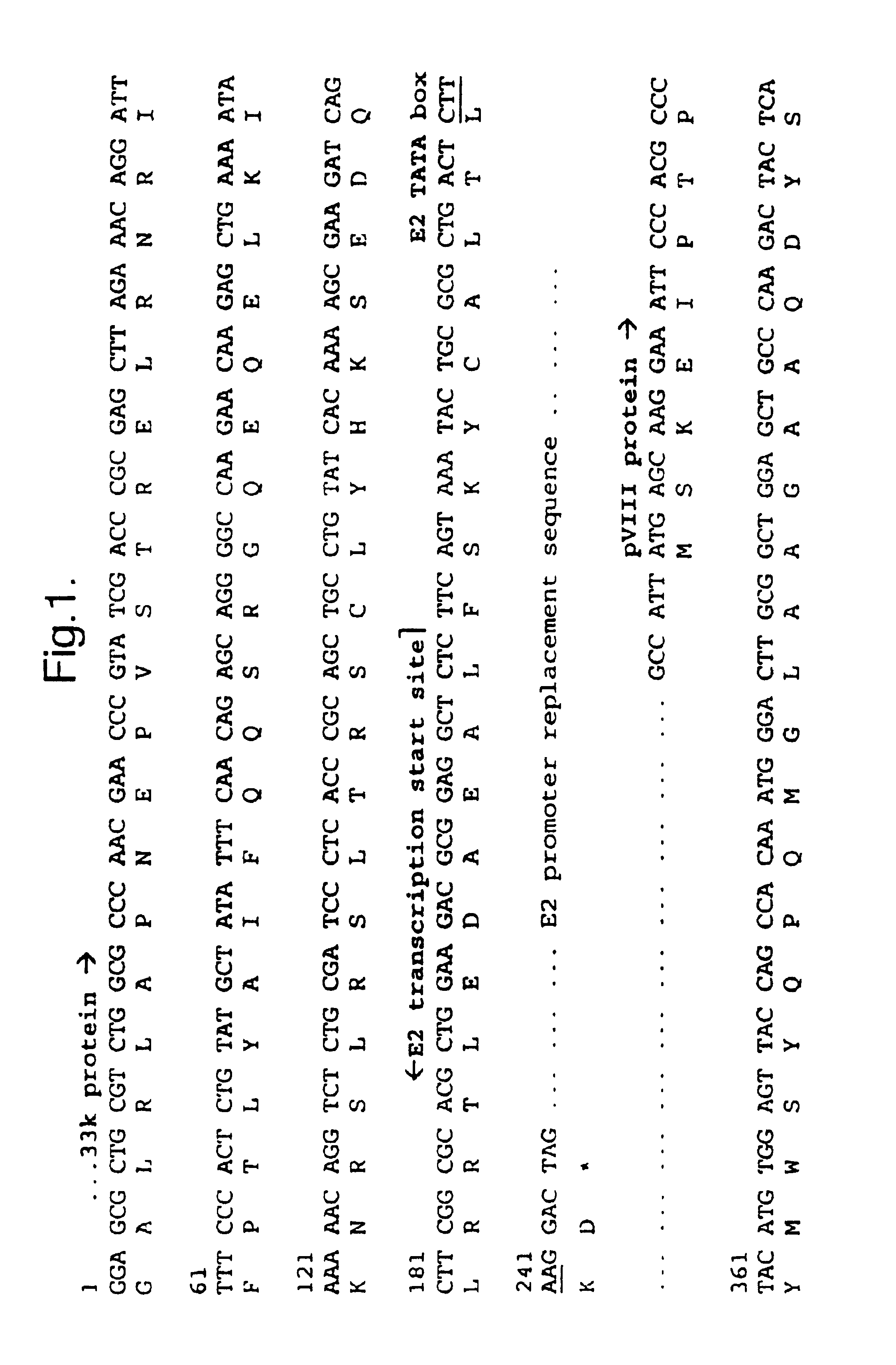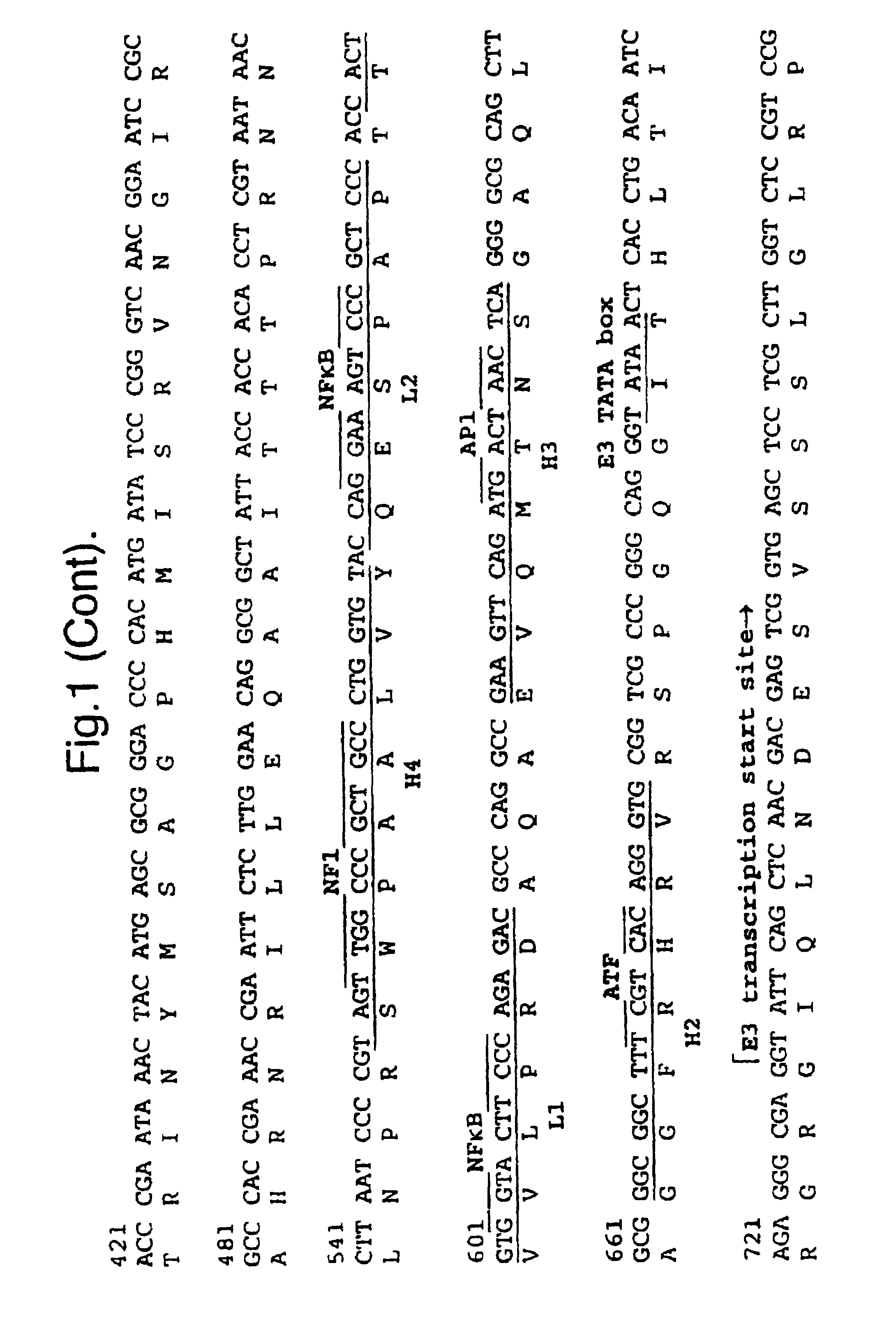Anti-neoplastic viral agents
- Summary
- Abstract
- Description
- Claims
- Application Information
AI Technical Summary
Benefits of technology
Problems solved by technology
Method used
Image
Examples
Example
[0109]The inventors have constructed viruses with the amino-terminus of E1B 55K fused to GFP (comparative virus LGM), with replacement of the E2 promoter by three Tcf sites (virus Ad-Tcf3), and with the two combined (virus LGC). The inventors have also constructed viruses with replacement of the E2 promoter by four Tcf sites alone (virus vMB12), with replacement of the E2 promoter by four Tcf sites combined with silent mutations in the E3 promoter, particularly to NF1, NFκB, AP1, and ATF sites (virus vMB14), and with replacement of the E2 promoter by four Tcf sites combined with silent mutations in the E3 promoter, particularly to NF1, NFκB, AP1, but not ATF sites (virus vMB13). The inventors have also constructed viruses with replacement of the Sp1 site in the E1B promoter with four Tcf sites in a wild type adenovirus backbone (virus vMB23), in a vMB12 backbone (virus vMB27), in a vMB13 backbone (virus vMB31) and in a vMB14 backbone (virus vMB19).
Brief Description of Key Constructs...
PUM
| Property | Measurement | Unit |
|---|---|---|
| Temperature | aaaaa | aaaaa |
| Nucleic acid sequence | aaaaa | aaaaa |
Abstract
Description
Claims
Application Information
 Login to View More
Login to View More - R&D
- Intellectual Property
- Life Sciences
- Materials
- Tech Scout
- Unparalleled Data Quality
- Higher Quality Content
- 60% Fewer Hallucinations
Browse by: Latest US Patents, China's latest patents, Technical Efficacy Thesaurus, Application Domain, Technology Topic, Popular Technical Reports.
© 2025 PatSnap. All rights reserved.Legal|Privacy policy|Modern Slavery Act Transparency Statement|Sitemap|About US| Contact US: help@patsnap.com



